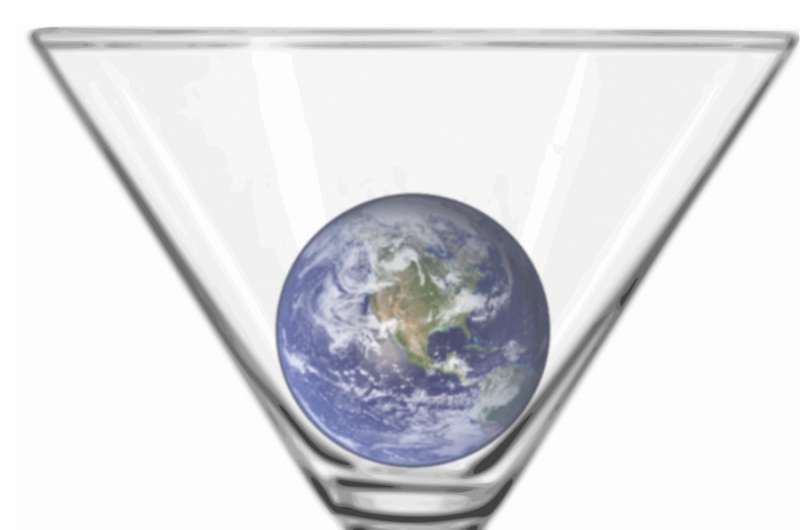Could 'cocktail geoengineering' save the climate?

Geoengineering is a catch-all term that refers to various theoretical ideas for altering Earth's energy balance to combat climate change. New research from an international team of atmospheric scientists published by Geophysical Research Letters investigates for the first time the possibility of using a "cocktail" of geoengineering tools to reduce changes in both temperature and precipitation caused by atmospheric greenhouse gases.
Carbon dioxide emissions from the burning of coal, oil, and gas not only cause the Earth to get hotter, they also affect weather patterns around the world. Management approaches need to address both warming and changes in the amount of rainfall and other forms of precipitation.
So-called solar geoengineering aims to cool the planet by deflecting some of the Sun's incoming rays. Ideas for accomplishing this include the dispersion of light-scattering particles in the upper atmosphere, which would mimic the cooling effect of major volcanic eruptions.
However, climate-modeling studies have shown that while this scattering of sunlight should reduce the warming caused by greenhouse gases in the atmosphere, it would tend to reduce rainfall and other types of precipitation less than would be optimal.
Another approach involves thinning of high cirrus clouds, which are involved in regulating the amount of heat that escapes from the planet to outer space. This would also reduce warming, but would not correct the increase in precipitation caused by global warming.
One method reduces rain too much. Another method reduces rain too little.
This is where the theoretical cocktail shaker gets deployed.
The team—which includes Carnegie's Ken Caldeira, Long Cao and Lei Duan of Zhejiang University, and Govindasamy Bala of the Indian Institute of Science—used models to simulate what would happen if sunlight were scattered by particles at the same time as the cirrus clouds were thinned. They wanted to understand how effective this combined set of tools would be at reversing climate change, both globally and regionally.
"As far as I know, this is the first study to try to model using two different geoengineering approaches simultaneously to try to improve the overall fit of the technology," Caldeira explained.
The good news is that their simulations showed that if both methods are deployed in concert, it would decrease warming to pre-industrial levels, as desired, and on a global level rainfall would also stay at pre-industrial levels. But the bad news is that while global average climate was largely restored, substantial differences remained locally, with some areas getting much wetter and other areas getting much drier.
"The same amount of rain fell around the globe in our models, but it fell in different places, which could create a big mismatch between what our economic infrastructure expects and what it will get," Caldeira added. "More complicated geoengineering solutions would likely do a bit better, but the best solution is simply to stop adding greenhouse gases to the atmosphere."
Caldeira said that the international collaboration of scientists (including scientists from China and India) undertook this research as part of a broader effort aimed at understanding the effectiveness and unintended consequences of proposed strategies for reducing climate change and its impacts.
More information: Simultaneous stabilization of global temperature and precipitation through cocktail geoengineering, Geophysical Research Letters (2017). DOI: 10.1002/2017GL074281 , onlinelibrary.wiley.com/doi/10 … 02/2017GL074281/full
Journal information: Geophysical Research Letters
Provided by Carnegie Institution for Science
















